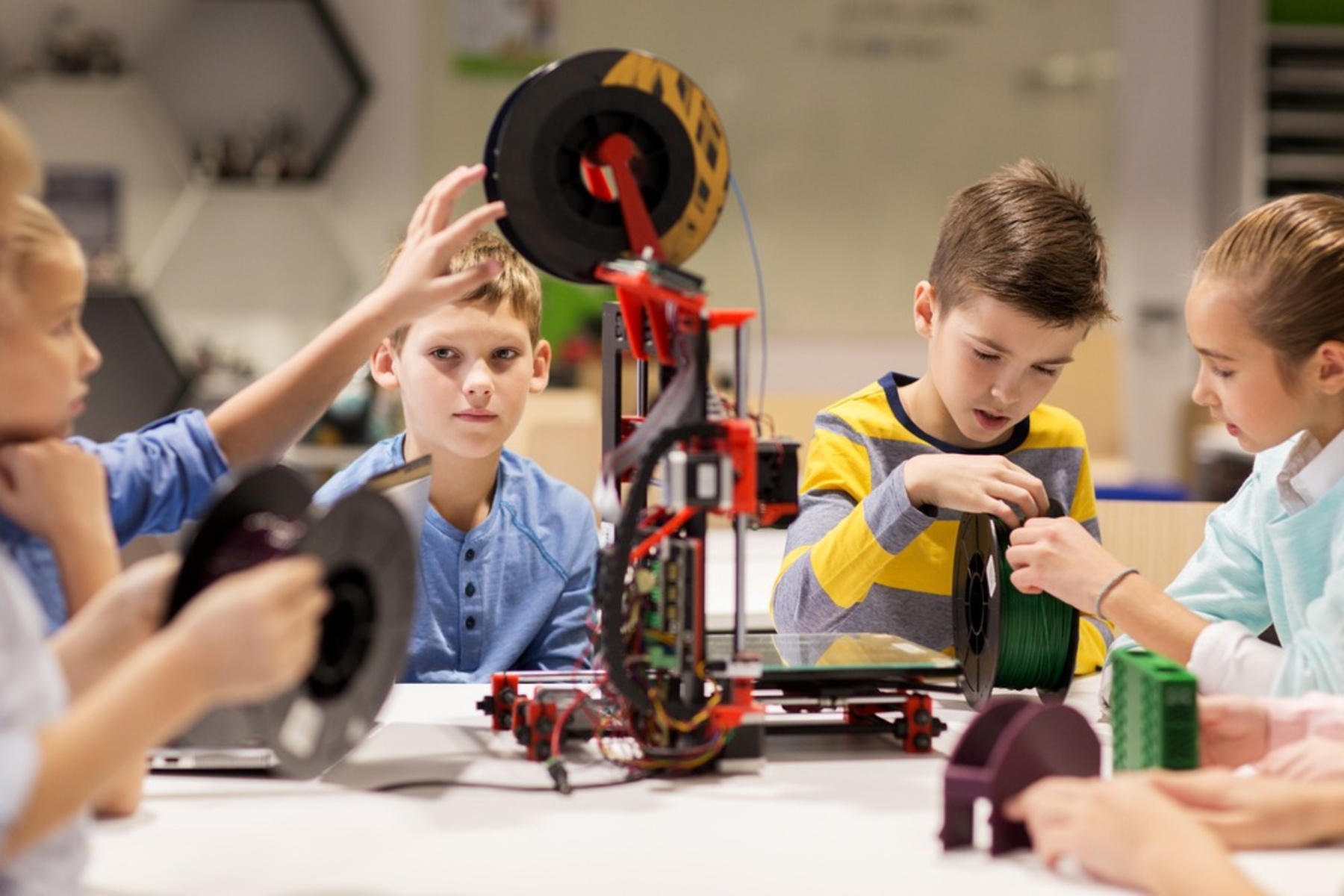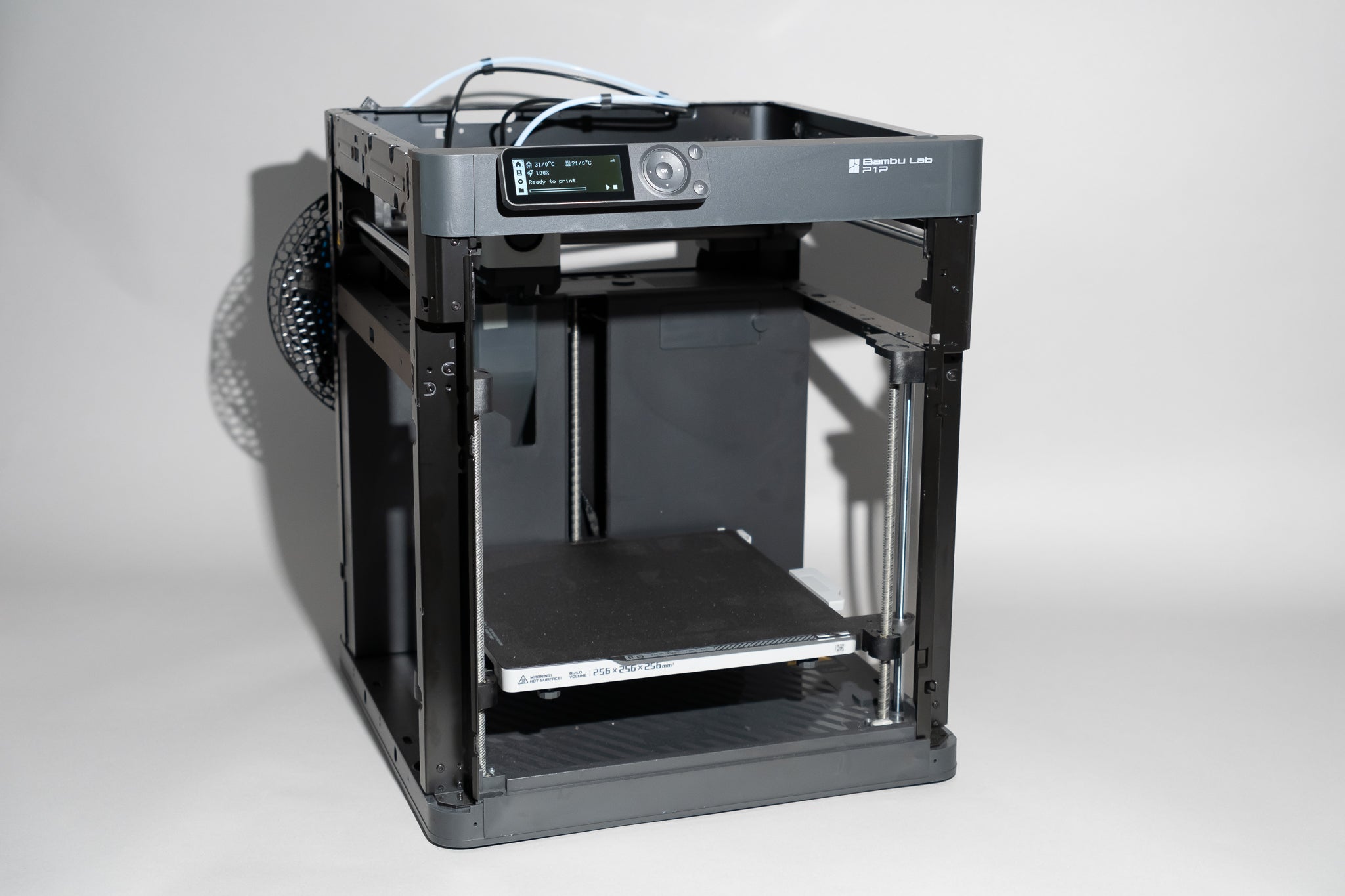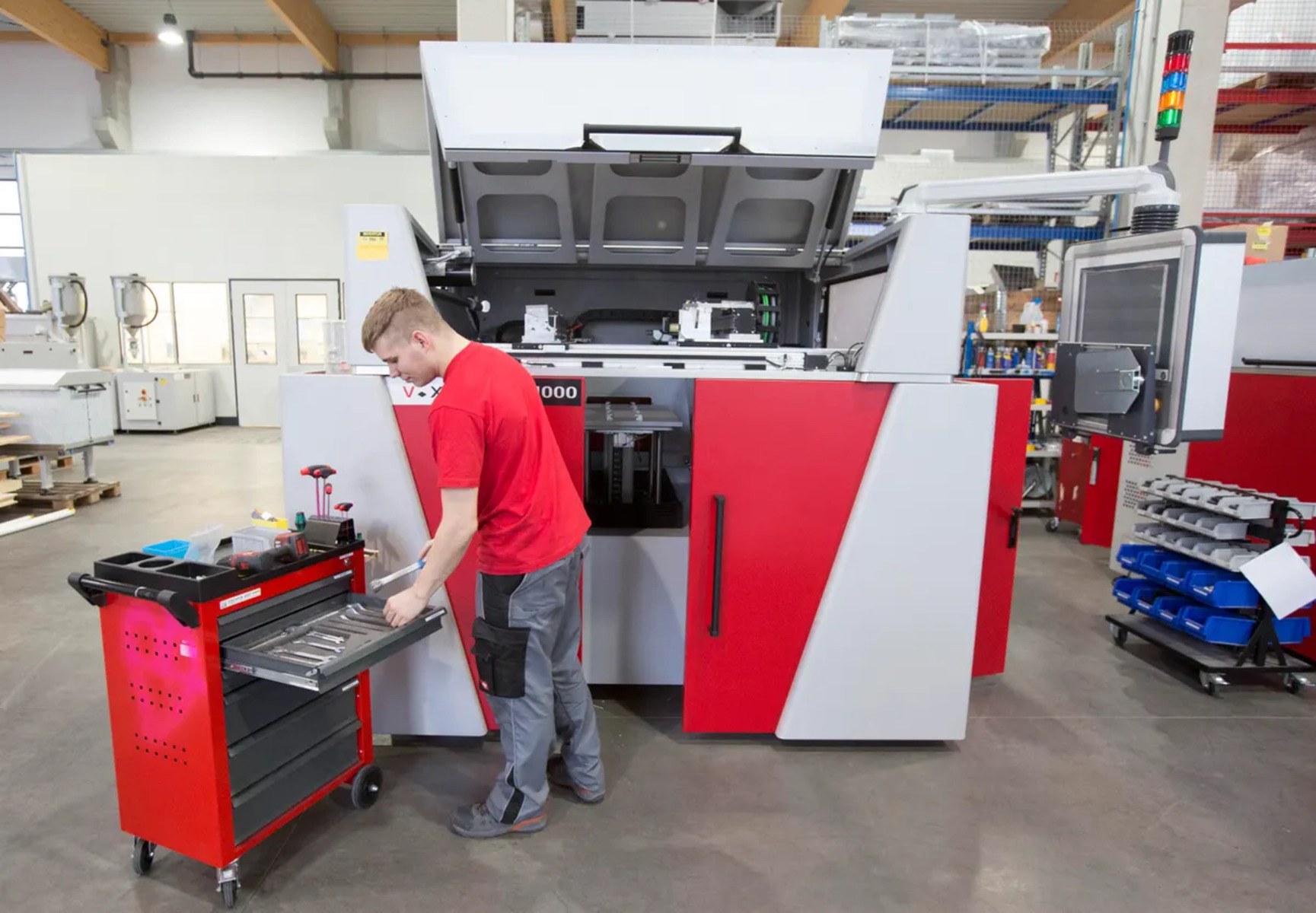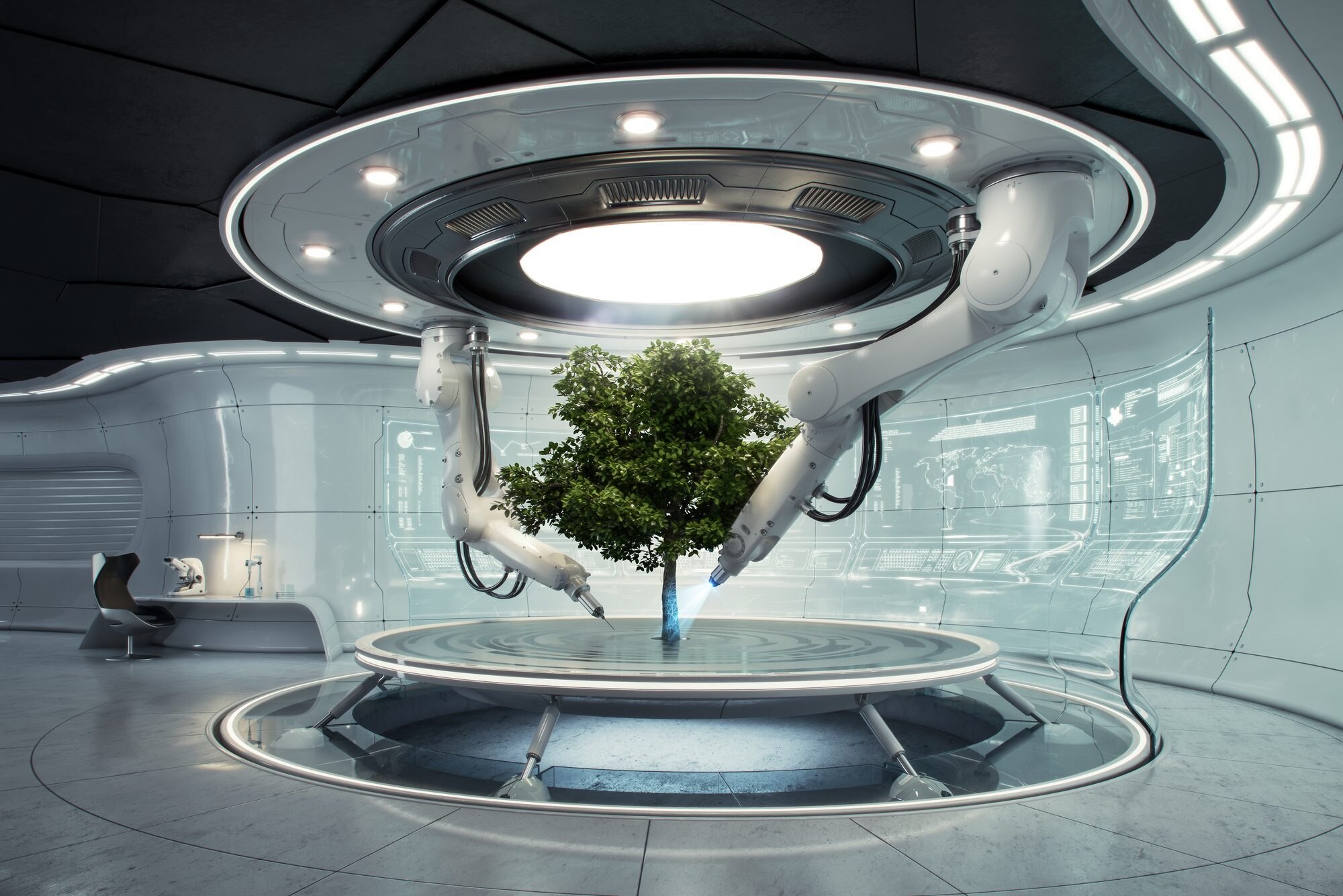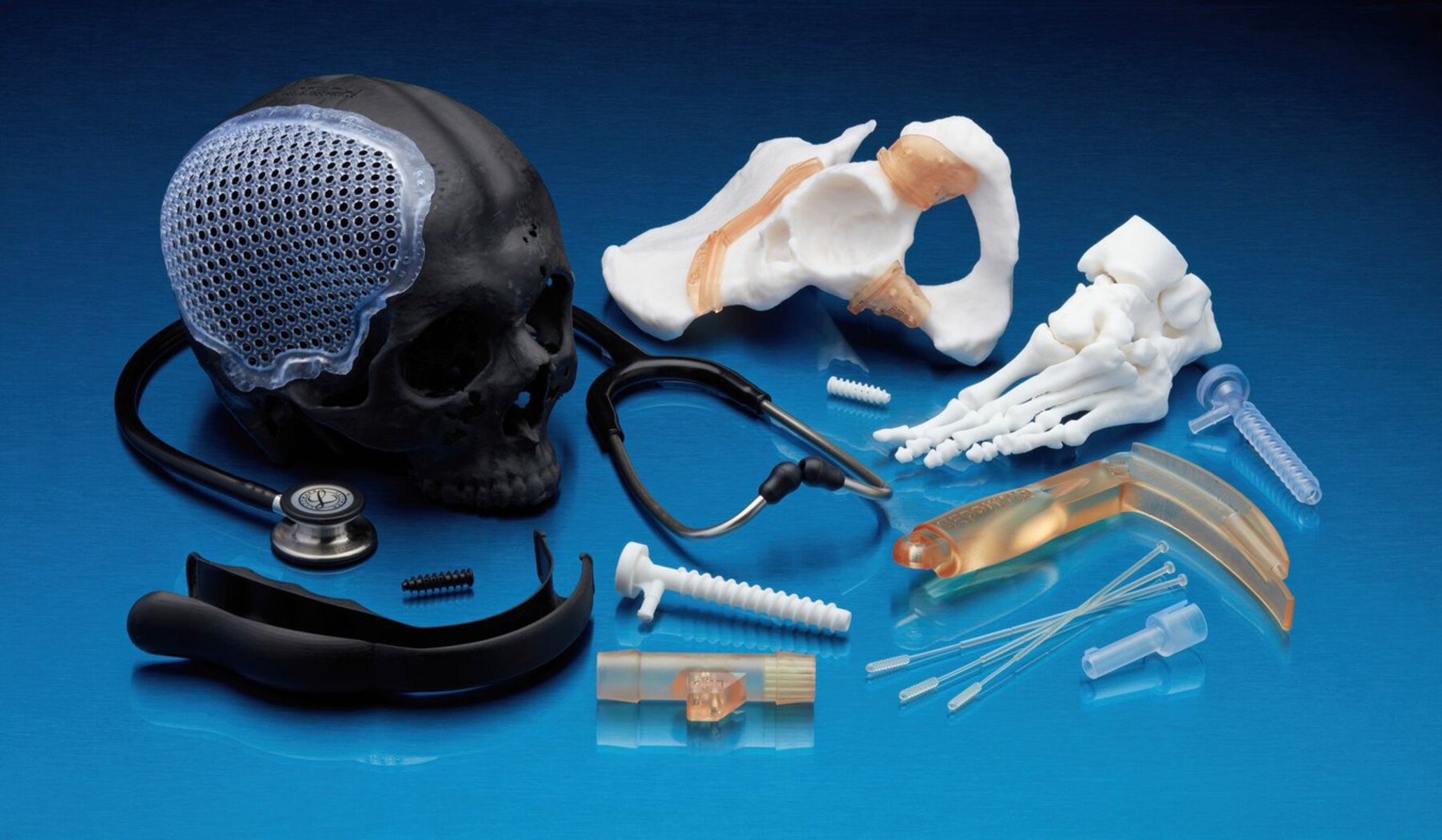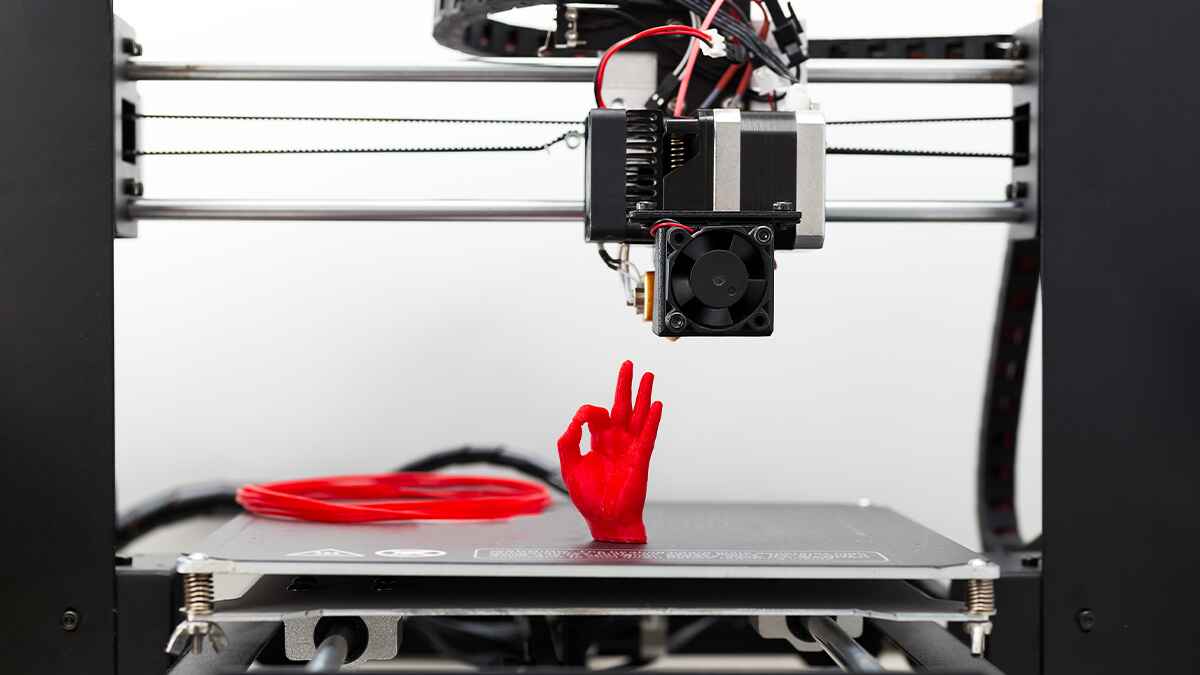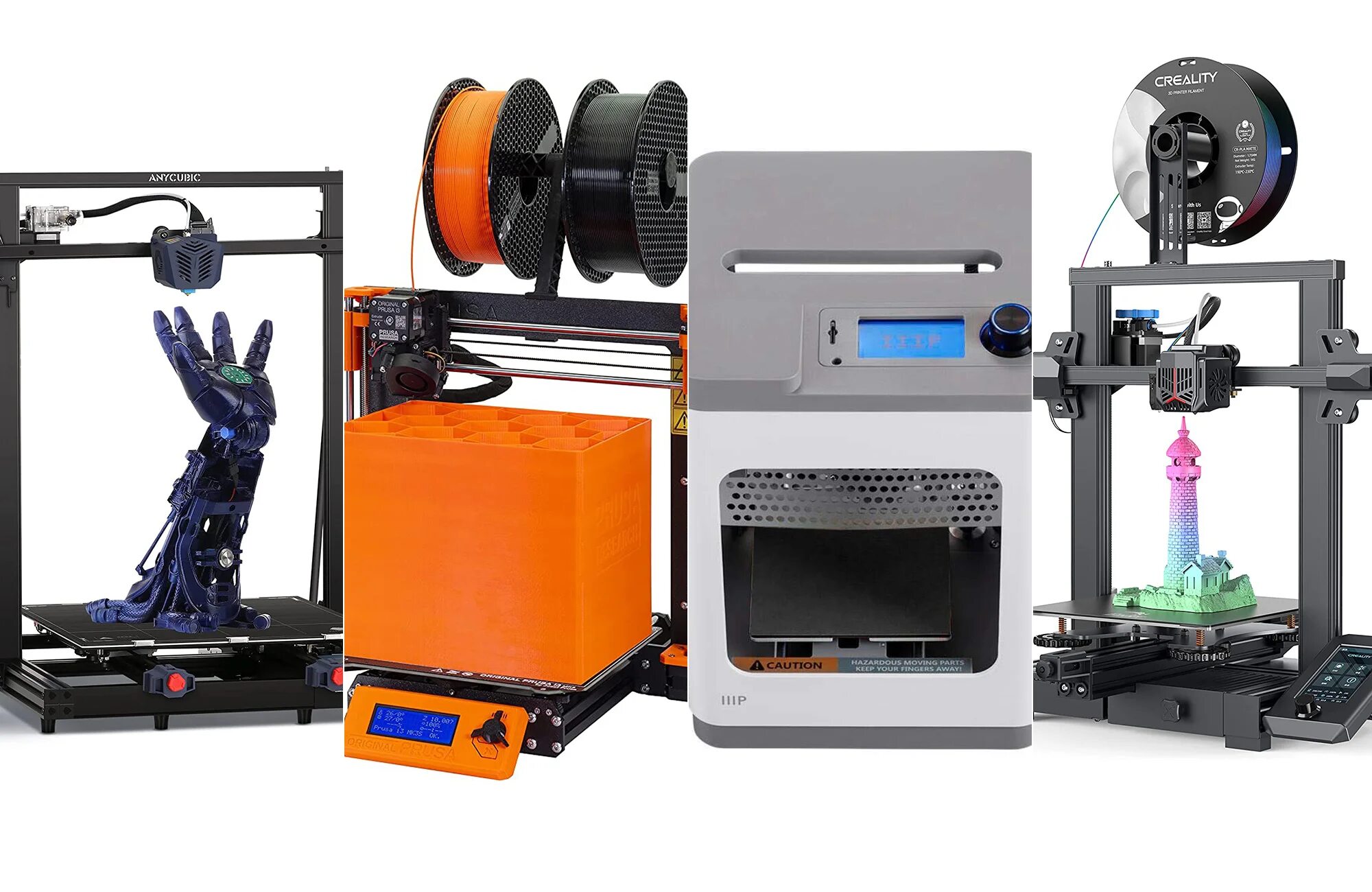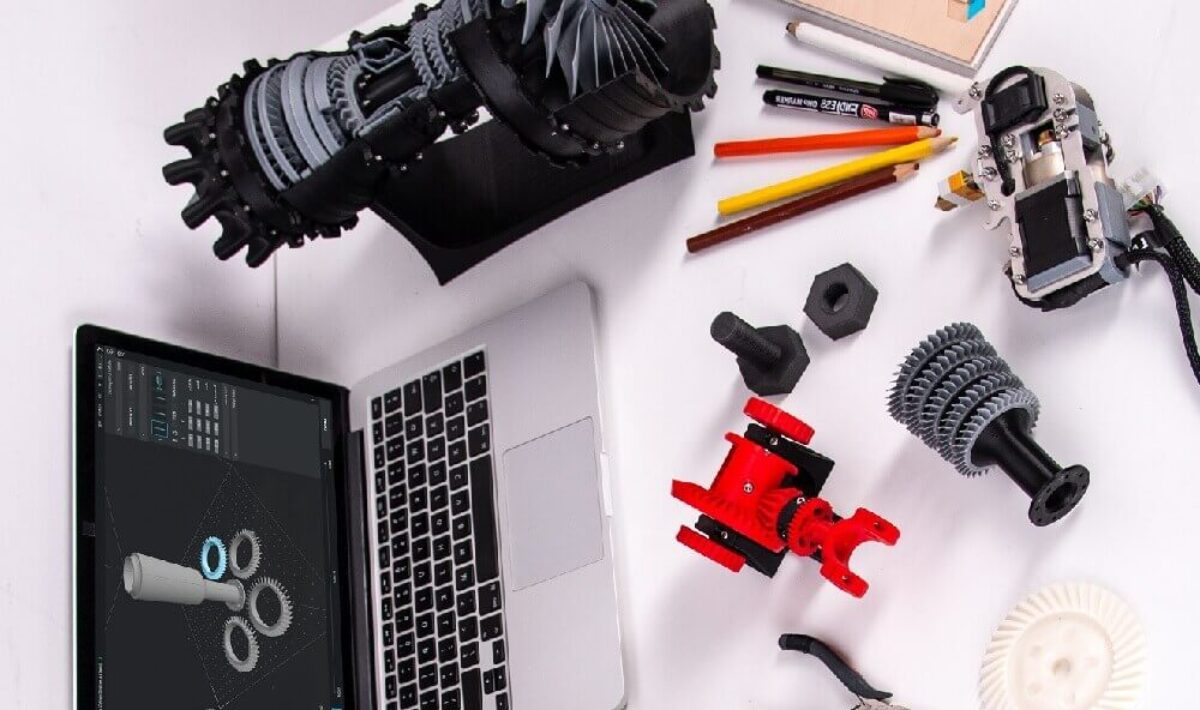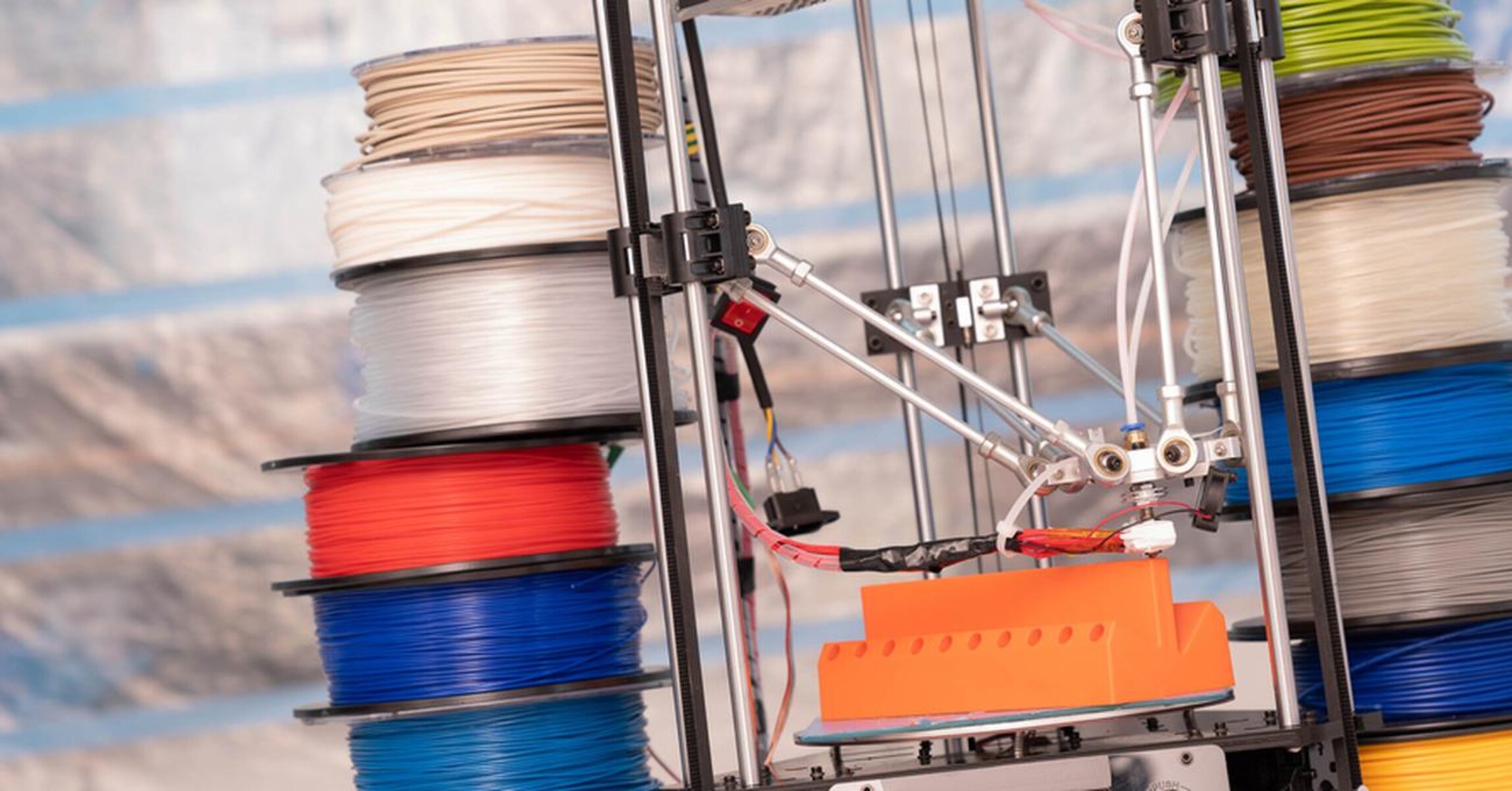Introduction
Welcome to the exciting world of 3D printing in education! Over the past few years, 3D printing has gained popularity and has become a valuable tool in various industries. Its applications range from manufacturing and engineering to healthcare and architecture. However, one area where 3D printing is making a significant impact is in education.
3D printing, also known as additive manufacturing, is the process of creating three-dimensional objects by layering materials based on a digital design. It allows students to transform their ideas into physical objects, giving them a hands-on experience that promotes critical thinking and problem-solving skills.
In this article, we will explore the various ways in which 3D printing is being used in education and the benefits it brings to students and educators alike. From enhancing STEM education to encouraging creativity and innovation, 3D printing has the potential to revolutionize the learning experience.
By integrating 3D printing into the classroom, educators can create an environment that fosters curiosity, engagement, and collaboration. Students are no longer limited to two-dimensional representations of objects or concepts; they can now interact with tangible, three-dimensional models that bring learning to life.
Throughout this article, we will delve into specific examples in different subject areas, such as art and design, history and archaeology, and biology and anatomy. Additionally, we will explore how 3D printing can teach entrepreneurship and problem-solving skills, cater to diverse learning needs, and connect students globally.
As we uncover the possibilities and advantages of incorporating 3D printing into education, it is important to remember that this technology is constantly evolving. The applications and potential of 3D printing in education are continually expanding, and it is an area that holds immense promise for the future.
So, let’s dive into the world of 3D printing in education and explore how this innovative technology is transforming the way we teach and learn.
The Basics of 3D Printing
Before we delve into the various applications of 3D printing in education, let’s first understand the basic principles behind this revolutionary technology.
At its core, 3D printing is a manufacturing process that creates three-dimensional objects by building them layer by layer. It starts with a digital model, typically designed using computer-aided design (CAD) software, which serves as the blueprint for the object to be printed.
The 3D printing process typically involves the following steps:
- Design: A digital model of the object is created using CAD software or acquired from pre-existing designs.
- Slicing: The digital model is sliced into thin horizontal layers using specialized software.
- Printing: The 3D printer reads the sliced design and begins to print each layer by selectively depositing or curing the chosen material.
- Layering: Each layer is stacked on top of the previous one, gradually building the object from the bottom up.
- Finishing: Once the printing is complete, any necessary post-processing tasks, such as removing support structures or adding finishing touches, may be performed.
3D printers can use a variety of materials, including plastics, metals, ceramics, and even living cells. The choice of material depends on the desired properties and applications of the printed object.
There are different types of 3D printing technologies available, including fused deposition modeling (FDM), stereolithography (SLA), selective laser sintering (SLS), and powder bed fusion (PBF). Each technology has its advantages and limitations, but they all follow the same basic principle of layer-by-layer construction.
3D printing offers several advantages over traditional manufacturing processes:
- Complex Geometry: 3D printing enables the creation of intricate and complex geometries that may not be feasible with traditional manufacturing methods.
- Customization: Objects can be easily customized and personalized to meet specific needs or preferences.
- Rapid Prototyping: 3D printing allows for quick iteration and testing of designs, reducing time and costs associated with traditional prototyping.
- Sustainability: By using only the necessary materials to create an object, 3D printing reduces waste and environmental impact.
As we move forward, it’s important to keep in mind the endless possibilities offered by 3D printing. This technology has the potential to revolutionize various industries and transform the educational landscape. Now that we have a grasp of the basics, let’s explore how 3D printing is being harnessed in the field of education.
Benefits of 3D Printing in Education
3D printing has gained significant recognition for its ability to revolutionize the educational landscape. By integrating this technology into classrooms, schools can unlock a plethora of benefits that enrich the learning experience and prepare students for the future.
Here are some of the key benefits of 3D printing in education:
Enhancing STEM Education
STEM education (Science, Technology, Engineering, and Mathematics) is vital for preparing students for careers in the rapidly advancing fields of science and technology. 3D printing provides a hands-on approach to learning these subjects, allowing students to conceptualize, design, and create objects that bring theoretical concepts to life. Through experimentation and problem-solving, students develop critical thinking and analytical skills that are crucial in STEM fields.
Encouraging Creativity and Innovation
3D printing empowers students to express their creativity and ideas in tangible ways. It fosters imaginative thinking, as students can design and print their own unique creations. By allowing students to explore and experiment with design iterations, 3D printing promotes innovation and nurtures an entrepreneurial mindset in the next generation of thinkers and inventors.
Hands-on Learning Experience
Traditional learning often involves passive consumption of information. In contrast, 3D printing offers a hands-on learning experience that actively engages students. By physically creating objects, students develop a deeper understanding of abstract concepts and problem-solving strategies. This active involvement promotes retention and sparks a genuine passion for learning.
Customized Learning Materials
3D printing allows educators to create customized learning materials tailored to individual students’ needs. Teachers can design and print models, visual aids, and manipulatives that cater to various learning styles and accommodate different ability levels. This personalized approach enhances student engagement and comprehension, making learning more accessible and enjoyable.
3D Printing in Art and Design Education
Art and design education benefit immensely from 3D printing. Students can bring their imaginative ideas to life, exploring concepts of form, space, and texture. They can create sculptures, prototypes, and architectural models, expanding their artistic expression and understanding of design principles.
3D Printing in History and Archeology Education
History and archeology education can be greatly enhanced through 3D printing. Students can recreate historical artifacts and structures, allowing them to study and interact with history in a more immersive and tangible way. This technology provides a bridge between the past and present, fostering a deeper connection and understanding of the world’s cultural heritage.
3D Printing in Biology and Anatomy Education
In biology and anatomy education, 3D printing enables students to explore complex biological structures in a hands-on manner. By printing 3D models of cells, organs, and anatomical systems, students gain a deeper understanding of physiological concepts and enhance their ability to analyze and interpret complex biological phenomena.
These are just a few examples of the benefits that 3D printing brings to education. The versatility and flexibility of this technology open up endless possibilities for engaging and effective teaching and learning. As we uncover more applications, the impact of 3D printing on education will continue to grow, empowering students and educators alike.
Enhancing STEM Education
The integration of 3D printing into STEM education (Science, Technology, Engineering, and Mathematics) has revolutionized the way these subjects are taught and learned. By providing students with a hands-on experience, 3D printing enhances their understanding and application of STEM concepts and prepares them for future careers in these rapidly advancing fields.
Here are some ways in which 3D printing enhances STEM education:
Visualizing Abstract Concepts
3D printing allows students to transform abstract concepts into tangible objects. They can design and print models that represent complex scientific and mathematical ideas, facilitating a deeper understanding of these concepts. For example, students can create geometric shapes to explore mathematical principles or print molecular models to visualize chemistry structures.
Prototyping and Iteration
One of the key advantages of 3D printing in STEM education is the ability to rapidly prototype and iterate designs. Students can design and print physical prototypes of engineering projects, allowing them to test and improve their designs in a cost-effective and time-efficient manner. This iterative process fosters critical thinking, problem-solving skills, and a deep understanding of the engineering design cycle.
Real-world Problem Solving
3D printing enables students to engage in real-world problem-solving exercises. By identifying a problem or need, students can design and print solutions using 3D printers. This hands-on approach requires students to think critically, analyze data, and apply STEM knowledge to develop innovative solutions. It promotes creativity, collaboration, and resourcefulness.
Cross-disciplinary Connections
STEM education encompasses multiple disciplines, and 3D printing allows students to make connections across these subjects. For example, students working on a robotics project can use 3D printing to create customized parts, combining their knowledge of mechanics, engineering, and computer programming. This integration of subjects fosters a holistic understanding of STEM concepts and their interdependencies.
Career Readiness
By integrating 3D printing into STEM education, students gain practical experience with a technology widely used in various industries. This hands-on experience prepares them for future careers in fields such as engineering, architecture, healthcare, and manufacturing. Students develop skills in CAD software, digital modeling, and design thinking, making them well-equipped for the modern workforce.
Overall, 3D printing provides a transformative platform that enhances STEM education. It encourages active engagement, critical thinking, and problem-solving skills, preparing students for the challenges and opportunities of the future. By integrating 3D printing into the curriculum, educators can inspire the next generation of innovators, scientists, engineers, and mathematicians.
Encouraging Creativity and Innovation
3D printing has emerged as a powerful tool for encouraging creativity and fostering innovation in education. By providing students with the ability to transform their ideas into tangible objects, 3D printing opens up a world of possibilities for exploration and invention. Here are some ways in which 3D printing encourages creativity and innovation in the classroom:
Design Thinking and Problem Solving
3D printing promotes design thinking and problem-solving skills by challenging students to identify problems, brainstorm creative solutions, and bring their ideas to life. Through the iterative process of designing, prototyping, and refining, students develop critical thinking skills and learn to approach challenges with a creative mindset. They learn to think outside the box, experiment with different design iterations, and adapt their designs based on feedback and observation.
Prototyping and Testing Ideas
With 3D printing, students have the ability to develop prototypes of their ideas quickly and inexpensively. This empowers them to test and refine their concepts, making improvements and adjustments along the way. By physically holding and interacting with their creations, students gain a deeper understanding of their designs and can identify areas for improvement or enhancement. This iterative process of prototyping nurtures innovation and allows students to learn from their mistakes and make informed design decisions.
Entrepreneurial Mindset
3D printing encourages an entrepreneurial mindset among students. By providing them with the tools to turn their ideas into reality, students gain a sense of ownership and empowerment over their creations. They develop skills in problem-solving, market research, cost analysis, and marketing as they work on bringing their 3D printed prototypes to the market. Through this process, students learn the value of creativity, innovation, and taking calculated risks, preparing them for future entrepreneurial endeavors.
Collaborative Learning and Sharing
3D printing promotes collaborative learning and knowledge sharing among students. By working together on design projects, students can share ideas, provide feedback, and collaborate on creating innovative solutions. This dynamic interaction fosters a spirit of teamwork and cooperation, as students learn from their peers and collectively contribute to the creative process. Through collaboration, students explore new perspectives, learn from diverse ideas, and develop a deeper appreciation for the power of collective innovation.
Cross-disciplinary Exploration
3D printing encourages cross-disciplinary exploration, allowing students to apply their creativity and innovation across various subjects. For example, students can integrate their artistic creativity into engineering projects by designing unique and aesthetically pleasing 3D printed objects. This cross-pollination of ideas and skills allows students to approach problems from different angles and encourages innovation at the intersection of multiple disciplines.
As 3D printing becomes more accessible in educational settings, students have the opportunity to embrace their creativity, think innovatively, and become active participants in the learning process. By providing a platform for turning ideas into reality, 3D printing ignites a passion for exploration and invention, nurturing the creative thinkers and innovators of the future.
Hands-on Learning Experience
3D printing offers a unique and immersive hands-on learning experience that goes beyond traditional classroom methods. By allowing students to physically create objects from their designs, 3D printing provides an interactive and engaging approach to learning. Here are some of the ways in which 3D printing enhances the hands-on learning experience:
Tangible Representation of Concepts
With 3D printing, students can transform abstract concepts into tangible objects. They can create physical representations of mathematical equations, scientific models, historical artifacts, and more. This tangible representation helps students visualize and understand complex concepts in a more concrete and meaningful way.
Active Engagement
3D printing promotes active engagement and participation in the learning process. Students actively design and print their creations, developing practical skills in computer-aided design (CAD) software and the operation of 3D printers. This hands-on involvement encourages curiosity, exploration, and a deeper connection to the subject matter.
Problem Solving and Critical Thinking
By engaging in 3D printing projects, students develop problem-solving and critical thinking skills. They encounter challenges and obstacles along the way, requiring them to think analytically and creatively to overcome these hurdles. The process of designing, prototyping, and troubleshooting cultivates resilience, adaptability, and a growth mindset.
Experiential Learning
3D printing provides opportunities for experiential learning, enabling students to actively experiment, innovate, and test their ideas. As they design and create physical objects, they gain a deeper understanding of the materials, structures, and processes involved. Experiential learning enhances retention and application of knowledge, as students directly experience and witness the outcomes of their efforts.
Integration of Multiple Subjects
3D printing allows for the integration of multiple subjects into a single project. Students can apply their knowledge from different disciplines, such as science, technology, engineering, arts, and mathematics (STEAM), to develop comprehensive and cross-disciplinary projects. This integration fosters a holistic understanding of the interconnectedness of various subjects and encourages a multidimensional approach to problem-solving and innovation.
The hands-on learning experience provided by 3D printing not only reinforces theoretical concepts but also nurtures essential skills such as creativity, critical thinking, problem-solving, and collaboration. It empowers students to be active participants in their learning journey, fostering a sense of ownership, pride, and accomplishment. As students bring their ideas to life through 3D printing, they develop a passion for learning, curiosity for exploration, and a deeper appreciation for the power of technology and innovation.
Customized Learning Materials
One of the significant advantages of 3D printing in education is the ability to create customized learning materials to cater to the individual needs and preferences of students. With 3D printing, educators can design and print a wide range of learning resources that enhance the learning experience and promote deeper understanding. Here are several ways in which 3D printing facilitates the creation of customized learning materials:
Visual Aids and Models
3D printing allows educators to design and print visual aids and models that provide a more tangible and realistic representation of abstract concepts. For example, in biology, teachers can print 3D models of cells or organs to give students a hands-on understanding of the structures and functions. In geometry, intricate geometric shapes can be printed to aid in visualizing spatial relationships and formulas.
Manipulatives for Experiential Learning
3D printing enables the creation of manipulatives that enhance experiential learning. Through hands-on manipulation of 3D printed objects, students can gain a deeper understanding of mathematical concepts, physics principles, or engineering designs. For instance, students can use 3D printed gears to explore mechanical systems, or they can physically assemble and dissemble atoms and molecules to comprehend chemical reactions.
Adapting Learning Materials to Different Learners
3D printing allows for the adaptation of learning materials to accommodate different learning styles and diverse needs. Educators can design and print personalized tactile resources for students with visual impairments or learning disabilities. By creating customized tools, teachers can provide inclusive learning experiences that empower every student to engage effectively with the curriculum.
Enhancing Multisensory Learning
3D printing promotes multisensory learning, leveraging the power of touch and sight to enhance comprehension and retention. By printing objects that students can physically explore, they can engage multiple senses simultaneously, enriching the learning experience. Incorporating texture, varying heights, or interactive features in 3D printed models facilitates a deeper connection and understanding of the subject matter.
Geographically Specific Learning Materials
3D printing enables the creation of geographically specific learning materials, particularly relevant in subjects such as geography, geology, or archaeology. Educators can print topographic maps, geological formations, or historical landmarks specific to the region being studied. This customization allows students to explore and understand their local environment in a more meaningful and personalized way.
By using 3D printing to create customized learning materials, educators can tailor their teaching approach and resources to address the unique needs and learning preferences of their students. This level of personalization promotes engagement, fosters deeper comprehension, and facilitates a more inclusive and individualized learning experience. As technology continues to evolve, the potential for customization and personalized learning through 3D printing will only expand, allowing educators to provide an even more tailored and effective education for their students.
3D Printing in Art and Design Education
3D printing has transformed the landscape of art and design education by offering endless possibilities for creativity, exploration, and innovation. By integrating 3D printing into the curriculum, educators can empower students to bring their artistic visions to life and expand their understanding of design principles. Here are some ways in which 3D printing enhances art and design education:
Unleashing Creativity and Self-expression
3D printing provides a platform for students to unleash their creativity and express their artistic ideas. By creating three-dimensional objects from their imagination, students can push the boundaries of traditional art and explore innovative techniques. 3D printing enables the realization of complex and intricate designs that were previously challenging to achieve with traditional art mediums.
Exploration of Form and Space
3D printing allows students to explore the concepts of form and space in a hands-on manner. They can design and print sculptures, models, and spatial structures that manifest their understanding of these fundamental concepts. By manipulating and visualizing three-dimensional forms, students develop a deeper appreciation for spatial relationships and gain insights into the interaction between objects and the surrounding environment.
Bridging Digital Design to Physical Artifacts
With 3D printing, students can bridge the gap between digital design and physical art. They can transfer their digital illustrations, computer-generated graphics, or virtual modeling into tangible objects. This transition enables students to understand the nuances of translating two-dimensional designs into three-dimensional artworks, creating a seamless connection between digital creativity and physical expression.
Creating Functional Art and Design
3D printing opens up new possibilities for creating functional art and design objects. Students can design and print practical items such as jewelry, furniture prototypes, fashion accessories, or architectural models. This integration of aesthetics and functionality cultivates a well-rounded understanding of design principles and prepares students for real-world applications of their creativity.
Cross-disciplinary Collaborations
3D printing encourages collaboration across disciplines, allowing art and design students to collaborate with students from other fields such as engineering or science. Through interdisciplinary collaborations, students can push the boundaries of creativity and innovation, combining their unique perspectives and expertise to create remarkable projects. This collaboration not only enriches the learning experience but also fosters the integration of different skills and knowledge domains.
By incorporating 3D printing into art and design education, educators can nurture the next generation of artists, designers, and innovators. The opportunities for creativity and exploration provided by 3D printing empower students to challenge conventions, push their artistic boundaries, and make a meaningful impact in the world of art and design. As technology continues to advance, the integration of 3D printing will reshape the landscape of artistic expression and expand the possibilities for artistic innovation.
3D Printing in History and Archeology Education
3D printing has revolutionized the field of history and archeology education by bringing the past to life in a tangible and immersive way. By integrating 3D printing into the curriculum, educators can provide students with the opportunity to explore historical artifacts and cultural heritage in a hands-on and interactive manner. Here are some ways in which 3D printing enhances history and archeology education:
Recreating Historical Artifacts and Structures
3D printing allows for the accurate reproduction of historical artifacts and structures that may be fragile, rare, or physically inaccessible. Educators can create 3D-printed replicas of ancient pottery, sculptures, or architectural wonders, enabling students to study and interact with historical objects firsthand. This immersive experience provides a deeper understanding of the cultural and historical significance of these artifacts.
Investigating Archaeological Sites and Discoveries
With 3D printing, educators can recreate archaeological sites and discoveries, allowing students to analyze and interpret them in a hands-on manner. By printing 3D models of excavation sites or reconstructed archaeological findings, students can gain insights into the methods and techniques used by archaeologists to uncover the past. They can examine the physical details of artifacts and engage in discussions about historical contexts and interpretations.
Cultural Heritage Preservation
Using 3D printing, educators and professionals in the field of history and archeology can contribute to the preservation of cultural heritage. By creating digital and physical replicas of endangered or damaged artifacts, they can safeguard these objects for future generations to study and appreciate. 3D printing enables the preservation of cultural heritage in a tangible and accessible format.
Virtual Museum Exhibits
3D printing facilitates the creation of virtual museum exhibits to supplement traditional museum experiences. Educators can design and print 3D models of artifacts that can be viewed and examined by students in virtual environments. This virtual accessibility broadens access to cultural artifacts and allows for engaging and interactive exploration of historical objects beyond the confines of physical museum spaces.
Hands-on Learning of Historical Processes
3D printing offers hands-on learning experiences related to historical processes and techniques. For example, students can print replicas of ancient tools or instruments, allowing them to understand and experiment with historical techniques such as printing presses, musical instruments, or coin minting. This experiential learning approach fosters a deeper appreciation for historical craftsmanship and technological advancements.
By incorporating 3D printing into history and archeology education, educators can transport students back in time and foster a deeper connection to the past. The opportunity to interact with tangible replicas and engage in discussions about historical contexts enhances students’ understanding and appreciation of history and archeology. 3D printing breathes new life into the study of the past, allowing students to explore, analyze, and experience history in an interactive and immersive way.
3D Printing in Biology and Anatomy Education
3D printing has revolutionized the field of biology and anatomy education by providing students with a hands-on and immersive learning experience. By creating three-dimensional models of biological structures and organs, educators can enhance student understanding, exploration, and knowledge retention. Here are some ways in which 3D printing enhances biology and anatomy education:
Visualizing Complex Biological Structures
3D printing allows educators to create accurate and detailed visual representations of complex biological structures. By printing 3D models of cells, organs, and anatomical systems, students can gain a deeper understanding of their intricate forms and functions. The tangible nature of these models provides a more comprehensive visualization than traditional two-dimensional illustrations or textbook images.
Hands-on Exploration of Anatomy
With 3D-printed anatomical models, students can explore human anatomy in a tactile and interactive way. They can manipulate and examine the structures of the skeletal system, muscular system, circulatory system, and more. This hands-on exploration enhances student engagement and encourages a deeper understanding of the interconnectedness of various anatomical components.
Simulation and Surgical Training
3D printing enables the creation of simulation models for surgical training and medical education. Surgeons and medical students can practice surgical procedures on printed anatomical models, allowing them to refine their skills and improve patient outcomes. This realistic simulation facilitates experiential learning and prepares students for real-world medical scenarios.
Personalized Learning for Individual Students
3D printing allows for the customization of anatomical models to cater to individual learning needs. Educators can create patient-specific models based on medical imaging data, allowing students to practice identifying and diagnosing anatomical variations or abnormalities. This personalized approach enhances student engagement and helps them develop critical observation and analysis skills.
Integration of Cross-sectional Imaging
By combining 3D printing with cross-sectional imaging techniques such as CT scans or MRI, educators can create multi-dimensional models that provide a comprehensive understanding of anatomical structures. Students can visualize internal organs and structures layer by layer, gaining insight into their complex relationships and spatial orientations.
Through the integration of 3D printing in biology and anatomy education, educators can create a dynamic and immersive learning environment for students. By engaging with three-dimensional models, students develop a deeper appreciation for the complexities of the human body and gain a practical understanding of anatomical structures. The hands-on exploration provided by 3D printing enhances student learning, retention, and critical thinking skills in the field of biology and anatomy.
Teaching Entrepreneurship and Problem-solving Skills
3D printing offers a unique opportunity for educators to teach entrepreneurship and problem-solving skills to students. By integrating 3D printing into the curriculum, educators can foster an entrepreneurial mindset and equip students with the skills and mindset necessary to succeed in a rapidly evolving world. Here are some ways in which 3D printing can teach entrepreneurship and problem-solving skills:
Identifying and Addressing Market Needs
3D printing allows students to identify and address market needs by designing and creating products that solve real-world problems. As students engage in the design process, they learn to think critically about target audiences, market demands, and product features. This exercise cultivates entrepreneurial thinking and empowers students to create innovative solutions.
Prototyping and Iteration
3D printing facilitates rapid prototyping and iterative design processes. Students can create multiple versions of their designs, testing, and refining them based on user feedback or performance evaluations. This iterative approach to problem-solving fosters resilience, adaptability, and a deep understanding of the design process.
Cost-effective Production and Small-scale Manufacturing
3D printing provides an affordable and accessible means of production for entrepreneurial ventures. Students can learn the basics of small-scale manufacturing and production by designing and printing products that can be brought to market. This hands-on experience enables students to explore the logistics of production, cost analysis, and quality control, fostering an entrepreneurial mindset and an understanding of business operations.
Market Research and Marketing Strategies
Entrepreneurship education goes beyond product design and production; it also encompasses market research and marketing strategies. Students can conduct market research to understand consumer preferences, analyze competitors, and identify target markets. Through this process, they gain insights into the importance of market analysis, marketing strategies, and effective communication with customers.
Pitching and Presentation Skills
3D printing projects often culminate in presentations or pitch sessions where students showcase their designs and entrepreneurial ideas. This provides an opportunity for students to develop their presentation skills, pitch their products effectively, and articulate the value proposition of their creations. By refining their communication skills and building confidence in presenting ideas, students become better equipped for future entrepreneurial endeavors.
Creativity, Innovation, and Risk-taking
3D printing fosters a culture of creativity, innovation, and risk-taking. By encouraging students to think outside the box and explore unconventional ideas, educators can instill an entrepreneurial mindset that embraces calculated risks and values innovative thinking. Through the design and production process, students learn that failure is a natural part of entrepreneurship and that it provides an opportunity for growth and improvement.
By incorporating 3D printing into entrepreneurship education, educators can nurture the entrepreneurial spirit in students and equip them with essential problem-solving and critical-thinking skills. Through hands-on experiences, iterative design processes, and an understanding of market dynamics, students gain practical knowledge and develop an entrepreneurial mindset that prepares them for success in a rapidly changing world.
Addressing Learning Disabilities and Special Education
3D printing has the potential to address the unique needs of students with learning disabilities and special education requirements. By incorporating 3D printing into inclusive classrooms, educators can create a more accessible and engaging learning environment that supports the diverse learning needs of all students. Here are some ways in which 3D printing can be beneficial in addressing learning disabilities and special education:
Tactile Learning and Multisensory Engagement
3D printing allows for the creation of tactile models and learning resources that support multisensory engagement. Students with visual impairments or certain learning disabilities can benefit from hands-on exploration of 3D printed objects that represent abstract concepts. By physically interacting with these models, students can enhance their understanding and retention of information.
Personalized Learning Materials
3D printing facilitates the creation of personalized learning materials tailored to the specific learning needs of each student. Educators can design and print customized manipulatives, visual aids, or prototypes that accommodate diverse learning styles and support individualized learning plans. This personalized approach promotes inclusivity and optimizes student engagement and comprehension.
Adapting Instructional Materials
3D printing allows for the adaptation of instructional materials to cater to the different learning requirements of students. For example, educators can modify the size, font, or color of 3D printed models to address visual or cognitive difficulties. By adjusting the characteristics of the printed objects, instructional materials become more accessible and better aligned with the unique learning profiles of students.
Enhancing Communication and Social Skills
Collaborative 3D printing projects can enhance communication and social skills in students with special education needs. By working together on design and production tasks, students can develop teamwork, problem-solving, and communication skills. Through project-based learning, they can cultivate social interactions, foster a sense of belonging, and build self-confidence.
Promoting Executive Functioning Skills
3D printing projects can promote the development of executive functioning skills in students with learning disabilities. Designing and printing 3D models require planning, organization, time management, and attention to detail. By engaging in these tasks, students can improve their executive functioning skills, which are essential for academic success and lifelong learning.
Project-Based Learning and Individualized Goal Setting
Through project-based learning with 3D printing, educators can facilitate individualized goal setting for students with learning disabilities. Each student can work towards personalized objectives, reflecting on their progress and adjusting their goals accordingly. This individualized approach empowers students to take ownership of their learning and builds self-determination skills.
By leveraging the benefits of 3D printing, educators can provide inclusive education that addresses the diverse learning needs of students with disabilities and special education requirements. Creating a supportive and accessible learning environment through 3D printing enables students to maximize their potential, engage actively in the learning process, and develop the necessary skills for academic and personal growth.
Collaboration and Global Connection
3D printing technology has the power to foster collaboration and create global connections among students from different geographical locations. By utilizing this technology, educators can promote teamwork, cultural exchange, and innovative problem-solving on a global scale. Here are some ways in which 3D printing facilitates collaboration and global connection:
Virtual Collaboration
3D printing enables virtual collaboration among students from different schools, cities, or even countries. Through online platforms, students can collaborate on 3D printing projects, exchange design files, provide feedback, and learn from each other’s perspectives. The technology transcends physical boundaries, allowing students to work together in real-time, overcoming geographical limitations.
Shared Design Libraries
Online platforms and shared design libraries provide students with access to a vast repository of 3D models and design ideas. Students from around the world can share their designs, inspiring others and fostering a sense of global community. Collaborative platforms enable students to build upon each other’s work, iterate designs, and learn from a diverse range of perspectives and cultural backgrounds.
Cultural Exchange and Appreciation
Through collaborative 3D printing projects, students have the opportunity to engage in cultural exchange and appreciation. By working with peers from different cultures, students can collaborate on designing objects that represent their unique cultural heritage, traditions, or historical landmarks. This collaborative process promotes understanding, empathy, and the celebration of diversity.
Global Problem-solving Initiatives
3D printing can be utilized in collaborative projects that address global challenges. Students from different countries can work together to design and print solutions to environmental, social, or humanitarian problems. This collaborative problem-solving approach not only enhances their technical skills but also instills a sense of global citizenship and responsibility.
Virtual Showcases and Exhibitions
Virtual platforms provide opportunities for students to showcase their 3D printing projects to a global audience. Online exhibitions and showcases allow students to share their work, receive feedback, and connect with other students, educators, and professionals from around the world. This exposure helps students develop presentation skills, gain recognition for their achievements, and build a network of connections.
By leveraging the collaborative nature of 3D printing, educators can cultivate a global mindset among students, promoting collaboration, communication, and the exchange of ideas. Through virtual collaboration and shared resources, students can engage in meaningful projects that transcend borders, fostering international connections and cultivating a sense of global responsibility and citizenship.
Future Possibilities of 3D Printing in Education
The potential of 3D printing in education continues to expand as the technology evolves. As we look ahead, exciting possibilities emerge for how 3D printing can further enhance the educational experience and transform the way we teach and learn. Here are some future possibilities of 3D printing in education:
Advanced Materials and Functionality
Advancements in 3D printing materials and techniques will enable the creation of more complex, functional, and diverse objects. From printing electronics and sensors to using biocompatible materials for biomedical applications, the future of 3D printing opens up new frontiers for innovative learning experiences across various disciplines.
Smart Objects and Internet of Things (IoT)
As 3D printing converges with the Internet of Things (IoT), students will have the opportunity to design and print smart objects that interact with their environment. This integration allows for the creation of interconnected systems, where students can print objects that can sense, process data, and communicate, enabling immersive and dynamic learning experiences.
Virtual Reality (VR) and Augmented Reality (AR)
The combination of 3D printing with virtual reality (VR) and augmented reality (AR) technologies will revolutionize the way students interact with their 3D printed creations. By merging the physical and virtual worlds, students can immerse themselves in virtual environments, manipulate virtual objects, and visualize the potential of their designs before printing them.
Open-source Collaboration and Innovation
The open-source nature of 3D printing fosters collaborative innovation, enabling educators, students, and professionals to share knowledge, techniques, and designs freely. Collaborative platforms will continue to emerge, allowing for global collaboration and the collective advancement of 3D printing in education. This open-source culture encourages creativity, collaboration, and a spirit of continuous improvement.
Entrepreneurship and Product Development
As 3D printing becomes more accessible, students will have the opportunity to embark on entrepreneurial ventures and bring their designs to the market. Entrepreneurship and product development will be integrated into the curriculum, allowing students to gain practical experience in designing, prototyping, and marketing their innovative ideas.
Accessibility and Inclusivity
The future of 3D printing in education holds great potential to address individual learning needs and promote inclusivity. With advancements in adaptive technologies, educators can leverage 3D printing to create customized learning materials, tactile models, and assistive devices that cater to the unique requirements of students with disabilities or special educational needs.
As 3D printing continues to evolve, the possibilities for its application in education are boundless. The technology has the potential to democratize design and manufacturing, providing students with a creative outlet and hands-on learning experiences. With further advancements, 3D printing will drive innovation, collaboration, and interdisciplinary learning, preparing students for the challenges and opportunities of the future.
Conclusion
3D printing is revolutionizing the field of education, opening up new possibilities for immersive, hands-on learning experiences. By integrating this technology into classrooms, educators can enhance STEM education, encourage creativity and innovation, and provide students with the tools to become problem solvers and critical thinkers. The benefits of 3D printing in education are far-reaching, impacting a wide range of subjects and catering to diverse learning needs.
Through 3D printing, students can visualize and interact with abstract concepts, bringing them to life in tangible forms. They can explore intricate geometries, study historical artifacts, understand complex biological structures, and push the boundaries of artistic expression. The ability to design and print three-dimensional objects fosters creativity, critical thinking, and collaboration, preparing students for the complexities of the modern world.
As advancements continue to be made in 3D printing technology, the future holds even more exciting possibilities. From advanced materials to the integration of virtual reality and augmented reality, the potential for innovation and cross-disciplinary learning is limitless. 3D printing has the unique capacity to inspire entrepreneurship, stimulate global collaboration, and promote inclusivity by addressing the needs of students with learning disabilities and special education requirements.
It is crucial for educators to leverage 3D printing as a tool for experiential and personalized learning. By embracing this technology, educators can empower students to become active agents in their own learning journeys, fostering a sense of curiosity, creativity, and resilience. As the 3D printing landscape evolves, collaboration, open-source sharing, and entrepreneurial opportunities will further enhance the educational experience.
The future of 3D printing in education is promising, with endless possibilities for transforming the way we teach and learn. As educators, students, and professionals continue to explore the potential of this technology, it is important to embrace its power to unlock innovation, inspire critical thinking, and cultivate the skills needed for success in the digital age.







